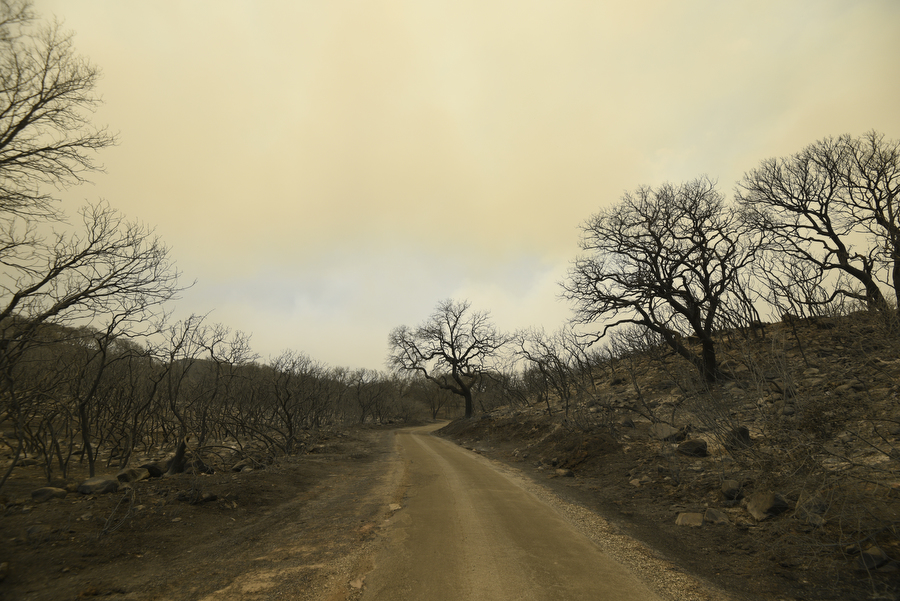Forest Service Details Whittier Fire Fallout
County Warned About Rainstorms Sending Debris Downhill

Very steep expanses of scorched earth left in the wake of this summer’s Whittier Fire set a worrisome stage as winter approaches, Santa Barbara County Supervisors learned Tuesday as U.S. Forest Service biologist Kevin Cooper presented a detailed report compiled by the federal agency’s Burned Area Emergency Response (BAER) team.
Basically, Cooper said, rainstorms moving across the 18,500-acre burn scar — destabilized by a lack of vegetation — can be expected to move sediment and debris rapidly downslope to clog concrete culverts beneath Highway 154, degrade the drinking-water quality and capacity of Cachuma Lake, and greatly impact the already limited habitat that exists for the federally endangered steelhead trout. Agency higher-ups in Washington, D.C., denied BAER’s recommendation that the Forest Service pay for a mulching program to accelerate natural revegetation across certain watersheds.
That mitigation effort would cost as much as $14 million to treat about 2,000 acres — roughly half of which are on Los Padres National Forest land — a price tag that’s prohibitively expensive for the county to pick up on its own, noted 4th District Supervisor Peter Adam.
Without a human-intervention program, biologists estimate that the burn area will recover on its own in about three years. County officials expressed optimism that Caltrans will act on its own recent assurances that it will be prepared should flooding problems develop at its culverts.



